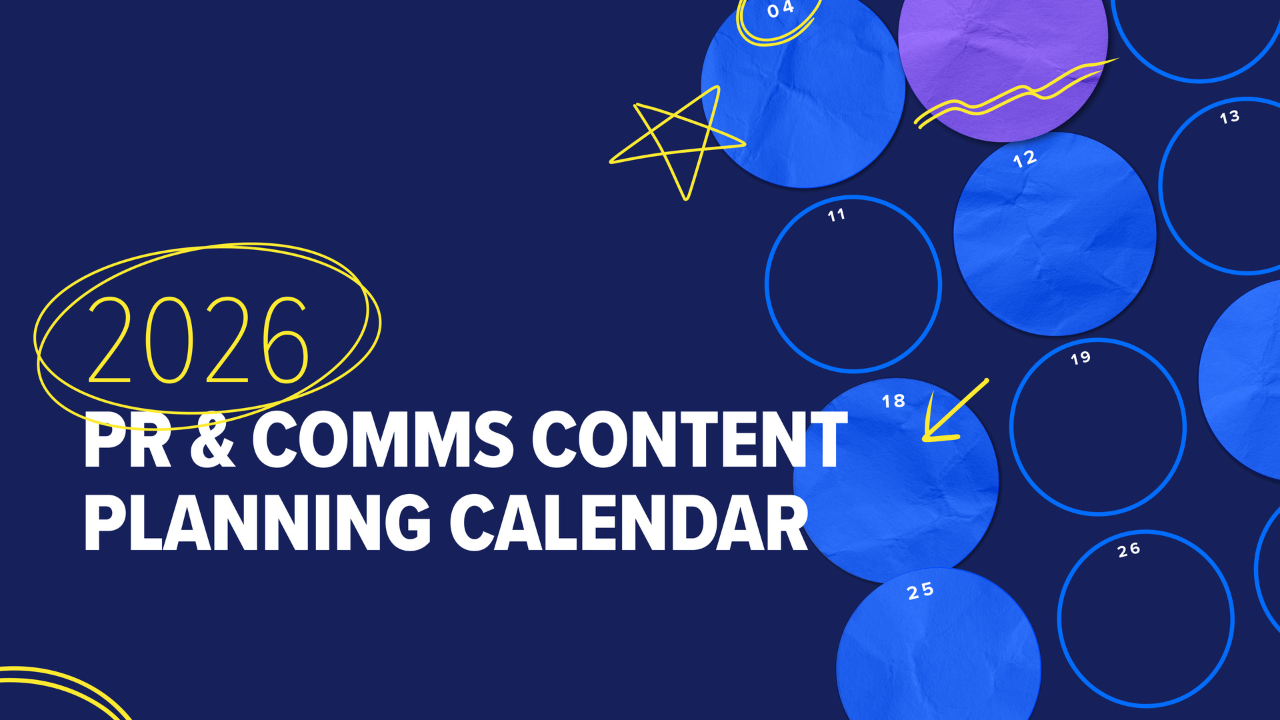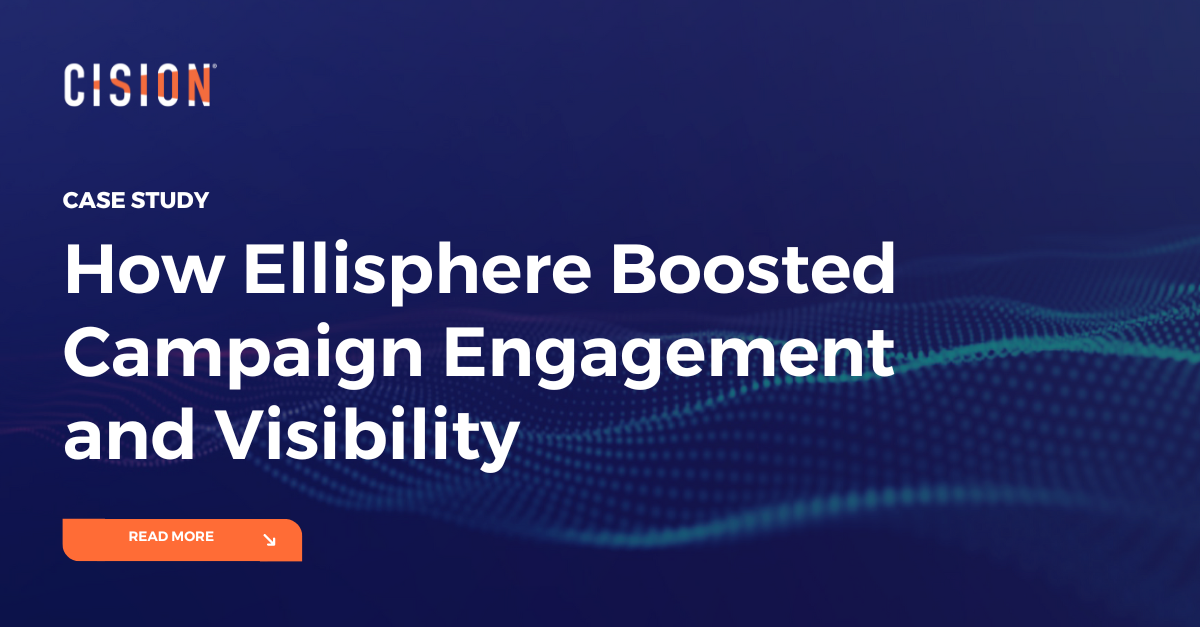If a successful PR strategy is your destination, a well-structured communications plan serves as the compass. Without it, even the most on-point messaging and creative campaigns can leave you rushing to respond to opportunities rather than creating them yourself. The difference between reactive and proactive communications often determines whether you build long-lasting brand equity or simply chase the latest crisis. According to our recent survey of more than 300 PR and communications professionals, it’s no surprise that PR and comms leaders feel like “a strategy that is too reactive versus proactive” is the No. 1 challenge standing in the way of effective comms efforts.
So, you’re probably wondering: What do I need for a successful comms plan?
Exploring this question can quickly get overwhelming; however, a systematic approach can help you break it down into a manageable strategy that addresses every aspect of your organization’s communications needs. The following seven elements are essential for creating a communications plan and will equip you with what you need to shift from a reactive to a proactive perspective, while also ensuring that your comms efforts will leave a lasting impact.
1. Clear and Specific Goals
Start your comms plan with the ending – your goals. Ask yourself this fundamental question: What do you want to accomplish? This isn’t a manifestation tactic; it’s about establishing clear, measurable objectives that directly connect your communications efforts to broader business objectives.
Effective goal setting creates a benchmark for measuring success, transforming subjective opinions about campaign performance into objective data points. With these goals in place, you can help shape every strategic decision that follows, from channel selection to message development, ensuring that you invest resources (financial, intellectual, technological) in activities that drive real impact (which you can later demonstrate to your C-suite).
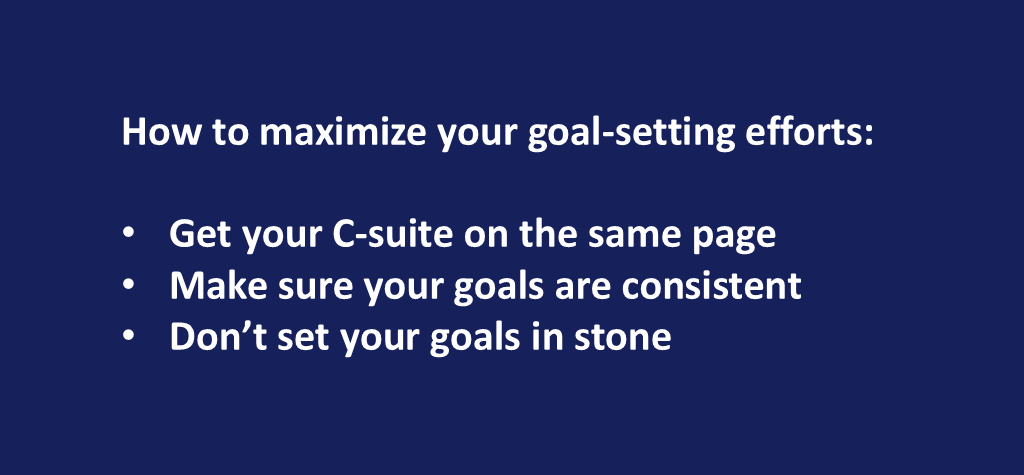
Successful communications goals go beyond your PR and comms department – they align with larger organizational priorities. Consider these critical factors for maximizing your goal setting effectiveness:
Get your C-Suite on the same page. Executive buy-in transforms communications goals from team resolutions into business priorities. With leadership support, you gain the resources and authority to achieve your goals. Moreover, having the C-suite on your side ensures your goals remain protected during budget discussions or strategic reorganization.
Make sure your goals are consistent. It’s important for everyone to know they work toward the same objectives. Share your goals with teams outside of your own (sales, marketing, customer success, communications), communicating how each team’s individual efforts contribute to shared goals. When they’re aware of their contributions’ impact, collaboration with these teams can run smoother. Consistency allows you to avoid mixed messaging and multiplies your impact.
Don’t set your goals in stone. Your core objectives should remain steady; however, the PR and comms industry is often unpredictable. Try to build flexibility into your goal framework so you can quickly adapt when new opportunities emerge or the industry makes a shift, without losing sight of your ultimate destination.
By checking these boxes, you have an opportunity to transform your goals from targets to fuel driving proactive strategies.
2. Defined Audience(s)
Your messaging is only as powerful as how much you understand your audience. Your target audience should shape every decision, from the tone you use in an email campaign to the platforms where you invest your time and budget.
Identifying audiences is not enough – an effective communications plan reflects a deep understanding of them. This means going beyond basic demographics and asking the right questions: What is something your audience can’t stop thinking about? Where do they turn for credible, authoritative information? How do they consume content? With these insights, you can turn your messaging into compelling narratives that move your targeted audiences to your desired actions.
There are a variety of ways to understand more about your audience, including customer surveys, focus groups, NPS scores, but probably the strongest tactic is social listening, which can give you a first row look at the conversations your audience is having about the industry, competitors, and your brand. Most PR softwares also have a sentiment analysis feature, which provides visibility into how audiences feel about your brand. Don’t forget to tap into your internal resources as well – such as your sales and marketing teams – for any intel they have on current and prospective customers.
It’s important to remember the main goal – you're not just collecting audience data; you’re using these insights to make strategic decisions and craft content that feels personally relevant to your audiences. Furthermore, don’t forget that audiences aren’t static. Regularly monitor your audiences so you can stay current with evolving preferences, emerging concerns, trending topics, and shifting perspectives.
3. The Right Media Mix
Just like you need the right Spotify mix for your mood, you also need the right mix of channels to communicate your message. Your audience is made up of all types of people, scattered across multiple platforms, consuming content in different ways. A successful communications team builds on this information, integrating the comms plan across multiple touchpoints, and meeting people where they already are.
Consider combining earned, owned, and paid tactics across both traditional and digital channels. By generating earned media coverage, you can build credibility through third-party validation (we recommend you check out our How to Win Over Journalists for More Earned Media Coverage tip sheet for insider intel that helps you get ahead), while owned media gives you complete control over your narrative, and paid media ensures your message reaches the right people at the right time.
For most resource-strapped PR and comms teams, it simply isn’t possible to be everywhere at once – in fact, today’s comms teams feel more pressure than ever to “do more with less,” according to the latest Comms Report – so knowing where to focus your efforts is key. That’s where understanding your audience comes in again. Knowing how they consume their news, which outlets they gravitate toward, and the social media channels they engage with, for instance, can inform where you focus your efforts.
A diverse media mix also requires coordination. Make sure your messaging is aligned across channels to reinforce the narrative and avoid audience confusion. For instance, if you’re announcing a new product launch, time your press release to go out alongside paid and owned media campaigns. Reach out to relevant reporters early or partner with an influencer (authentic to your brand) to generate buzz ahead of the announcement. This coordinated approach gives your audience an opportunity to engage with your content on their terms (for instance, maybe they prefer watching a webinar over reading an in-depth guide). Be consistent and adapt your messaging to each platform and audience.
4. Compelling Key Messages
Your key messages should inspire specific thoughts, feelings, and actions. No matter how compelling you think your brand’s story is, it has to matter to the audience. You need to craft narratives that connect with your audiences by conveying why they would specifically find value in that narrative. A strong key message answers the following questions:
What do I want the audience to feel about my brand? Excitement? Interest? Relief that it offers a solution to their problem?
How do I want them to feel when they come across my message? Curious? Amused? Inspired?
What action do I want them to take? Request a demo? Share the content?
What’s in it for the audience? A free trial or sample? Access to exclusive content?
In short, every message should have a clear purpose.
When developing your messaging, here’s what you should consider:
Make the most of competitive analysis. No matter how niche your industry is, the truth is that your brand has competitors. And that’s not a bad thing – analyzing competition offers an opportunity to not only see what kind of messages your competitors are spreading, but also how they’re doing it. Does this mean you’ll do the same, or is it a chance to offer a unique value proposition? Pay attention to the language patterns, proof points, and channel strategies.
Craft messages they won’t forget. You want your messages to be memorable – they should be clear, specific, and resonant. Show your audiences how you bring value. Want to improve your PR writing? Check out The 5 Best Tips for PR Writing article to explore our top tips for crafting captivating, authentic, and consistent content.
5. Brand Advocates
Now that you’ve got your key messaging in place, it’s time to amplify it. And who better to do that than brand advocates, also known as the voices that your audience already trusts?
Journalists and influencers are among the most powerful brand advocates out there, providing third-party validation that is key to establishing credibility and amplifying messaging. PR teams are often the ones responsible for building those relationships – which is part of what makes the role of PR both so important and so challenging. Building strong relationships with journalists starts with showing your value and establishing yourself as a resource journalists can rely on. That means sharing timely insights, reliable data, exclusive interviews, and fresh perspectives that their audiences will find value in.
Influencer partnerships work in a similar way in that they need to be relevant to your brand, so make sure your brand values align with their voice. The most effective collaborations feel natural – authenticity is crucial, and it can transform a paid partnership into a trustworthy recommendation that drives real engagement.
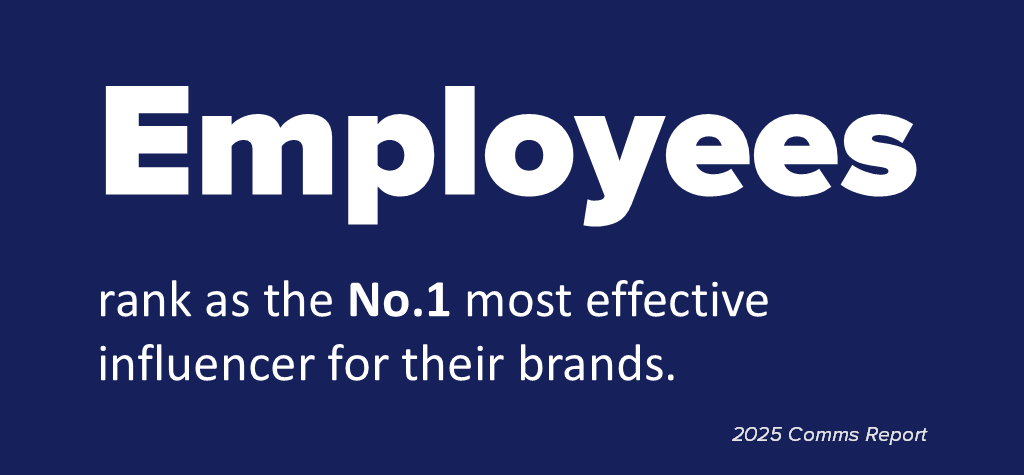
But journalists and influencers are not the only valuable brand advocates. There’s another group that you shouldn’t overlook, one that can be even more influential: Employees. According to the 2025 Comms Report, employees rank as the No.1 influencer for their brands – far above social media influencers and celebrities. Employees are often the most authentic champions, as they bring insider knowledge and genuine enthusiasm, humanizing your brand in ways that paid campaigns can’t. Thus, if you have news to share, get your employees excited about it as well by communicating how the news benefits them as well. Then empower them with the resources they need to share it – from messaging and visual assets to share on their social channels to sales enablement materials.
6. KPIs That Matter
KPIs are not just mere numbers – they are tied to the strategic goals you set. If your goal is to grow perceptions of thought leadership around your brand, for example, you might focus on tracking metrics like share of voice (SOV) in industry conversations. Or, if you’re focused on lead generation, keep an eye on qualified leads or conversion rates. (See 7 Must-Have PR KPIs to Measure Your Communications Campaign for more insight.)
With focused KPIs that you’re monitoring regularly, you can re-focus your strategy quickly when something isn’t working (remember the flexibility we talked about above) and double down on those tactics that perform well (or better than expected). Whether weekly, monthly, or quarterly, depending on your timeline, regular reviews of your KPIs help inform strategic decisions about resources allocation, messaging refinement, and channel optimization.
7. Reliable PR Software
Quality PR software makes the steps above easier to carry out, especially as it provides a single source of data and informs data-driven decision-making.
If you haven’t done so already, find a reliable PR software solution that works for your team and brings your strategies to life. When evaluating PR software solutions, make sure it offers the following features: media monitoring (this is the backbone of any PR software worth its salt), social listening, outreach, a media database, as well as reporting and analytics. Moreover, try to ask yourself the following questions:
Do you find the PR software easy to navigate?
Does it have a seamless workflow?
Can it integrate with other platforms?
Does it enable you to easily collaborate with other teams?
Are you able to extract (and share) the insights you need?
A PR software solution will help you coordinate campaigns across multiple channels, track performance metrics in real time, and optimize messaging based on audience engagement data. CisionOne does all of this, and more.
Bonus: Comms Plan Enhancement With AI (if you want)
This last element is not necessarily essential to your comms plan (yet), but as more PR teams are realizing, it can definitely enhance it. Consider these findings from the 2025 Comms Report, which illustrate how PR and comms teams are taking advantage of AI:
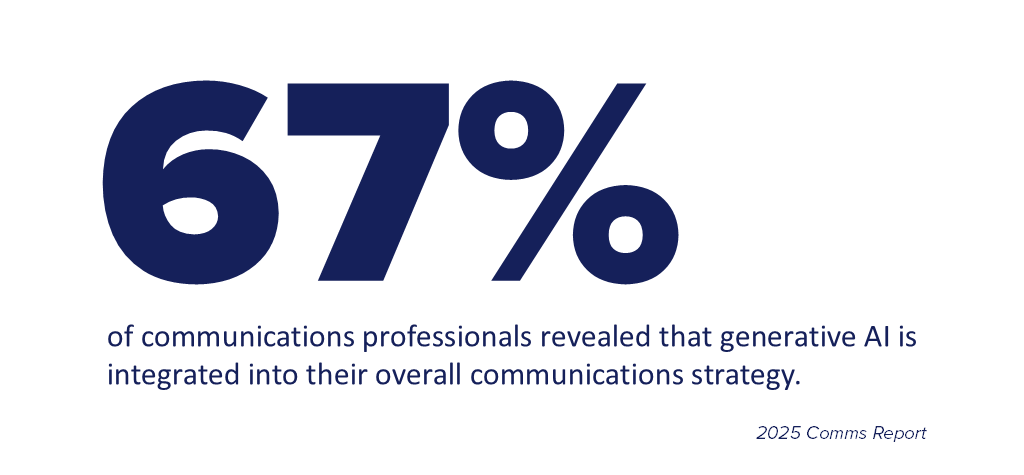
Sixty-seven percent of comms professionals revealed that generative AI is either “very much so” (23%) or “somewhat” present (44%) in their overall communications strategy.
Thirty-seven percent use generative AI to review or optimize content – up 9 percentage points from last year. Moreover, thirty-six percent utilize it on a regular basis for creating content for external audiences, thirty-five percent for brainstorming campaign ideas and strategies, and thirty-two percent for crafting media pitches.
Sixty-five percent say generative AI tools are notably improving their data/analytics capabilities.
From generative AI tools that are helping PR teams craft content to AI-powered platforms that inform data-driven PR strategies, AI – when used purposedly and responsibly – can be a powerful tool for enhancing your current comms plan.
Keep in mind that although AI can enhance efficiency and provide valuable insights, the most successful communications plans are built on authenticity, originality, and the human touch. (Think of AI as a source for identifying trends and generating initial concepts, but strategic thinking, relationship building, and creativity will still be left in your hands). For more about AI best practices, check out The Complete Guide to Using AI for PR.
The Bottom Line
Now you’ve got all the essential elements for building (or re-building) your communications plan so you can share your message to the right people, through the right channels, and at the right time. With an effective comms plan in place, you can better support your overall strategy and drive more success for your brand.
Want to check the #7 essential element off your list? Your communications plan needs a reliable PR software that helps you monitor the conversations that matter most and shape your messaging. Speak with an expert and learn more about CisionOne.
Most Recent Posts
Cision Resources
-
E-books and Guides
Comprehensive how-to guides on strategy and tactics
-
Case Studies
What are other brands doing – and how can we learn from them?
About Bianca Parvu
Bianca is the Junior Copywriter at Cision, specializing in tech industry storytelling. She crafts engaging content across digital channels, from thought leadership to email marketing campaigns.
Learn More. Do More. demo new
PR Tips, Case Studies, and Product Updates

[On-Demand Webinar] The Next Generation of Media Intelligence: From Gorkana to CisionOne
Explore CisionOne, a revolutionary media intelligence platform, and the evolution of Gorkana. Learn key features and strategies from Luke Williams, CisionOne Product Marketing Manager. Elevate your media outreach to new heights!

